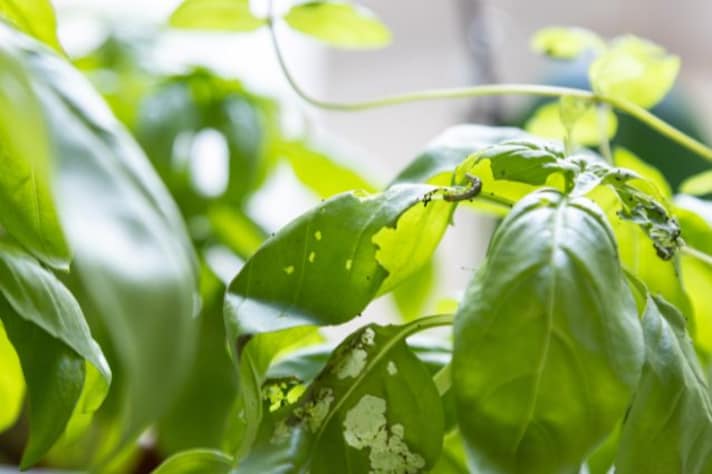
Basil is a beloved herb in many kitchens, known for its aromatic leaves that add a burst of freshness to dishes like pesto, salads, and pasta. However, if you’ve ever grown basil, you may have encountered a common problem: holes in the leaves. These holes can be frustrating and leave you wondering what’s causing the damage and how to prevent it.
Common Causes of Holes in Basil Leaves
Insect Pests
One of the most common reasons for holes in basil leaves is insect pests. Various bugs are attracted to basil, and they can quickly damage your plants if left unchecked. The main offenders include aphids, Japanese beetles, slugs and snails.
Environmental Factors
While pests are often the primary cause, environmental factors can also contribute to holes in basil leaves. Conditions such as high humidity or excessive watering can create an environment that encourages fungal infections or weakens the plant, making it more susceptible to pest attacks. Additionally, strong winds can cause leaves to rub against each other or nearby objects, leading to small tears that appear as holes.

Nutrient Deficiencies
Although less common, nutrient deficiencies in the soil can lead to weakened basil plants with more fragile leaves that are prone to damage. A lack of essential nutrients like nitrogen, potassium, or magnesium may result in poor growth, yellowing, and increased vulnerability to pests and disease.
How to Prevent and Treat Holes in Basil Leaves
The first step in preventing holes is regular inspection of your basil plants. Check both the tops and undersides of leaves for signs of pests. Early detection allows you to take action before the infestation becomes severe. If you find pests, there are several natural methods you can use to control them:
- For larger pests like beetles, manually removing them from the plant can be effective.
- Neem oil, a natural pesticide can be sprayed on basil to deter aphids, beetles, and other insects.
- Insecticidal soap is a gentle option that targets soft-bodied insects like aphids without harming the plant.
- Sprinkling Diatomaceous Earth powder around the base of the plant can deter slugs and snails.

To avoid fungal issues, ensure your basil is planted in well-draining soil and receives adequate airflow. Water the plants at the base, rather than from above, to keep the leaves dry. If you live in a windy area, consider providing some protection to prevent physical damage to the leaves.
Maintain healthy soil by adding compost or a balanced fertilizer to ensure your basil plants receive the nutrients they need. Healthy, well-fed plants are more resilient against pests and environmental stress.
When to Harvest and Use Damaged Leaves
If your basil leaves have minor damage or small holes, they are still perfectly safe to eat. Simply trim away the damaged parts, and the rest of the leaf can be used in your cooking. However, if the leaves are heavily infested or show signs of fungal infection, it’s best to discard them to avoid any potential contamination.
;Resize,width=767;)
